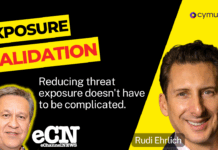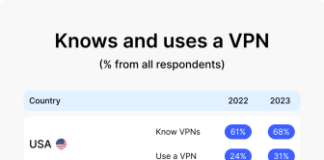The new coronavirus puts disaster plans top of mind for all business leaders, none more so than HR. Large-scale outbreaks of such dangerous diseases threaten employees directly — as individuals and cumulatively as a workforce.
The top priority for HR: Put people first. As in the SARS, MERS and H1N1 outbreaks, the latest coronavirus generates uncertainty, fear and anxiety — especially if employees think they could be exposed at work.
The new coronavirus puts disaster plans top of mind for all business leaders, none more so than HR. Large-scale outbreaks of such dangerous diseases threaten employees directly — as individuals and cumulatively as a workforce.
The top priority for HR: Put people first. As in the SARS, MERS and H1N1 outbreaks, the latest coronavirus generates uncertainty, fear and anxiety — especially if employees think they could be exposed at work.
“When SARS spread to four continents in 2003, executives at several companies told us that managing employees’ concerns and questions was one of the most time-consuming associated activities,” says Brian Kropp, Distinguished Vice President, Gartner.Employees worry about more than their physical safety; they worry about the potential disruptions to their own work, and wonder how the organization plans to manage its operations.
Let local HR managers make decisions
While this coronavirus outbreak may never become a pandemic, it remains a major disruption that can affect your global operations for months. Still, outbreaks affect some regions more rapidly and severely than others, so give local HR managers leeway to react independently.
It’s up to global HR to provide timely and accurate information to local teams, but let local HR teams evaluate triggers for actions and make their own time-sensitive critical decisions, such as office closures.
Also pay special attention to the role of HR’s global mobility and expatriate services teams. When crises occur, these teams may be called upon to repatriate employees, either temporarily or permanently. Set expectations for communication and response times, and define clear roles for each member of these teams during a crisis. Many organizations periodically run crisis scenarios to evaluate their readiness before a real event occurs.
Know what’s needed to keep the lights on
Any outbreak strikes directly at your most valuable asset — your employees — and could last for months, so at the very least, plan for absenteeism. When your organization develops an impact analysis, work with your partners in risk management and business operations to determine which roles are necessary for the organization to function. Two key steps to take:
- Identify key business functions. Some will be critical based on the role they play — such as their links to business priorities in a given region or to mission-critical products in a specific location. Prioritize customer and contractor relationships that you need to maintain as long as possible. Pinpoint functions impacted directly by “surge” activities that arise or increase during an outbreak or if a pandemic occurs.
- Identify key roles, activities and skill sets. You need some under all circumstances; others can be suspended for a short time or an extended period without damaging business activities. Build operational resilience by bolstering bench strength in critical areas and consider distributing essential roles and functions geographically in case one region needs to suspend operations temporarily.
-
Be prepared to answer these 10 questions
HR leaders can’t wait for a crisis to develop to start responding. You need answers now to questions you’ll face in the event of any large-scale outbreak.
Prepare to answer basic employees questions about the threat: What is the nature of the disease? How is it transmitted? What are its symptoms, and what healthcare precautions are appropriate? Have answers for logistical questions, such as whether employees can work from home or what to do if an infected employee comes to work .
More broadly, to ensure that employees, shareholders and other stakeholders believe the organization is prepared to handle a crisis, make sure you can answer these 10 questions:
- Can our company operate with 25% or greater absenteeism?
- If illness causes high absenteeism, are employees cross-trained and able to perform multiple duties?
- Can our employees work remotely?
- What infrastructure support is needed to support a shift to an at-home workforce?
- Will our company monitor, or even restrict, travel to high-risk regions?
- What procedures do we have in place to decontaminate the facility and its heating, ventilation, air-conditioning systems, electronic equipment and soft materials (blankets, curtains, etc.)?
- What assurances do we need to provide to the facility staff members so they feel safe at work?
- How will traveling employees be brought home, particularly if they are sick?
- Are there escalation procedures to get additional resources?
- Is there a trained and representative crisis management team that includes on-call staff, and do those team members know what is expected of them?
Source: Gartner
















